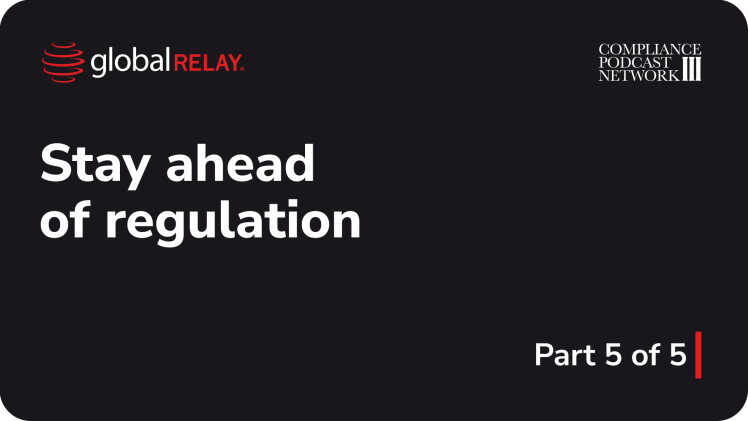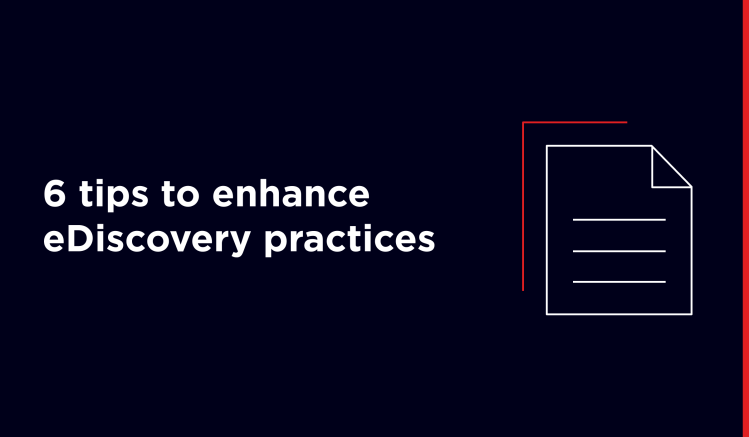Financial services run on data. For every action, whether it’s a trade, credit check, or insurance pay-out, data is sourced, amalgamated, reviewed, and used to make decisions – and those decisions in turn create yet more data.
Unsurprisingly, financial regulation also depends on data, with regulators like the Securities and Exchange Commission (SEC) requiring firms to keep complete digital records of trading actions, internal and external communications, and social media marketing activities, to name a few. These datasets need to be available in their entirety should regulators launch an investigation into a firm – with the penalties for incomplete data being severe.
With financial data existing at ever-increasing volumes, the integrity, availability, and accessibility of that data have never been more crucial. The SEC, alongside eight other regulatory agencies, has proposed new joint data standards to ensure that firms have a level playing field when it comes to how they need to store, sort, and report data – for everyone’s benefit.
Setting the standard
On August 2, 2024, the SEC released a proposal to establish new joint data standards under the Financial Data Transparency Act 2022. The proposal is expected to be taken up by eight other agencies including the Commodities Futures Trading Commission (CFTC) and the Office of the Comptroller of the Currency (OCC). The new standards would:
“Promote interoperability of financial regulatory data across the agencies by establishing common identifiers for entities, geographic locations, dates, and certain products and currencies.”
The new data standards would further establish:
- A principles-based joint standard with respect to transmitting and structuring data
- Requirements to render data fully searchable and machine-readable
- A requirement that firms enable high-quality data through schemas, with accompanying metadata, which clearly define the semantic meaning of the data
- The need for firms to ensure that data exists to satisfy an underlying regulatory information requirement be consistently identified as such in machine-readable metadata
The proposal includes a public comment period, which will remain open for 60 days following the publication in the federal register.
What is the Financial Data Transparency Act 2022?
In his statement coinciding with the launch of the proposal, SEC Chair Gary Gensler explains that the joint data standards fulfil a congressional mandate set out in the Financial Data Transparency Act of 2022 (FDTA). This act was established with the aim to:
“Amend securities and banking laws to make the information reported to financial regulatory agencies electronically searchable, to further enable the development of regulatory technologies and artificial intelligence applications, to put the United States on a path towards building a comprehensive Standard Business Reporting program to ultimately harmonize and reduce the private sector’s regulatory compliance burden, while enhancing transparency and accountability.”
The SEC’s proposal is aligned with this goal to the extent that it shares wording verbatim with the FDTA. The goals set out in the Act, to reduce regulatory compliance burdens, increase transparency, and enable regulatory technologies and AI to develop, are clearly represented in the proposals – for example, the requirement that data is ‘fully searchable and machine-readable’ will ensure it is ready to be fed into regulator’s AI or machine learning based systems for more expedient analysis.
Strong, yet flexible
Gensler’s statement lists the potential benefits of establishing the new data standards, for regulators, firms, and the public:
“I’m pleased to support this proposal, as it will make financial data collected by the Agencies more accessible, uniform, and useful to the public. Consistent data standards will make it easier for financial institutions to file reports across multiple agencies. They also will help regulators be more effective and efficient in carrying out our oversight functions.”
Interoperability is a key focus of the proposal, as making data consistently available across multiple regulators will help firms that may need to submit data to multiple regulators at a time. Data consistency and uniformity will also assist regulators, as they will be able to share data where relevant, and more easily sort and search data where required. Meeting these standards will be a vital first step for firms looking to start off on the right foot when it comes to investigations.
While establishing strong requirements, the data standard includes room for flexibility:
“Secondly, the joint proposal would establish a principles-based joint standard with respect to transmitting and structuring data. Under the proposal, any specific format (e.g., eXtensible Markup Language) that enables the structuring and transmission of high-quality, machine-readable data would be permitted … In accordance with the FDTA, Agencies will be permitted flexibility in considering how best to implement the final joint standards.”
It appears that as long as the data firms provide meets the requirements of being ‘high quality’ and ‘machine-readable’ (and includes the requisite eight common identifiers), a range of data structuring and transmission formats would be accepted, giving firms more flexibility in the methods they use to sort and structure their data.
What are the benefits of data standards?
There are clear benefits to the agencies proposing the implementation of data standards under the FDTA, including better interoperability and increased ease of utilizing data to fulfil their regulatory duties. However, ensuring data meets these standards will also have many benefits for firms themselves.
1) Cleaner data, clearer compliance
High-quality datais better able to secure high-quality compliance outcomes. By having access to more structured, searchable data and related metadata, firms will be able to more quickly and efficiently utilize this data in compliance workflows.
Automated compliance processes like surveillance policies and legal holds will be able to be set up with more expediency and will perform better, as they can more accurately analyze data. Having searchable metadata gives firms all they need to know who has been acting in a potentially risky manner, such as conducting off-channel communications or using language that is a sign of bullying or harassment, and to set up targeted policies to monitor for any further red flags.
2) Internal interoperability
While the SEC highlights the benefits of interoperability for the agencies proposing the new standards, there are also interoperability benefits for the firms meeting them. Multiple departments across a business will utilize data day-to-day, from trading teams to compliance functions, legal, HR, and data analysts.
For firms where teams are more siloed, a lack of consistent data formatting or quality can hold operations back, as teams struggle to sort and format data for their specific use cases. By having a clear data standard, functions across the business know that the data they produce has to be structured and formatted to meet that standard. This enables teams to know they’re going to have access to high-quality, well formatted data, saving time and resource and allowing them to adapt their workflows accordingly.
3) Augmented AI
There is clear emphasis throughout the SEC’s proposal that data must be formatted and presented in a way that is ‘machine readable’. By ensuring that data meets this standard, firms are enabling agencies to employ AI and machine learning algorithms to more quickly search data for signs of misconduct. By meeting the new standard, firms are also unlocking these capabilities for their own internal use cases. AI algorithms ‘feed’ on data, and automated processes fare far better when that data is high-quality, reducing instances of false positives and the need for teams to reformat or structure data in a specific way to be ‘fed’ into AI workflows.
4) Better regulatory relations
Should a regulatory investigation target a firm, time is of the essence in providing the investigators everything they need to perform it. By having access to complete, coherent data that meets the new data standard, and that can be shared quickly without the need for lengthy internal review, firms will be able to respond to regulatory requests quickly, and avoid seeming slow or obstructive.
The data standards also mean that expectations of data content and formatting will be consistent across multiple regulatory agencies, meaning firms can quickly share data should more than one agency need to review it, without needing to spend time and resource meeting individual agency requirements.




